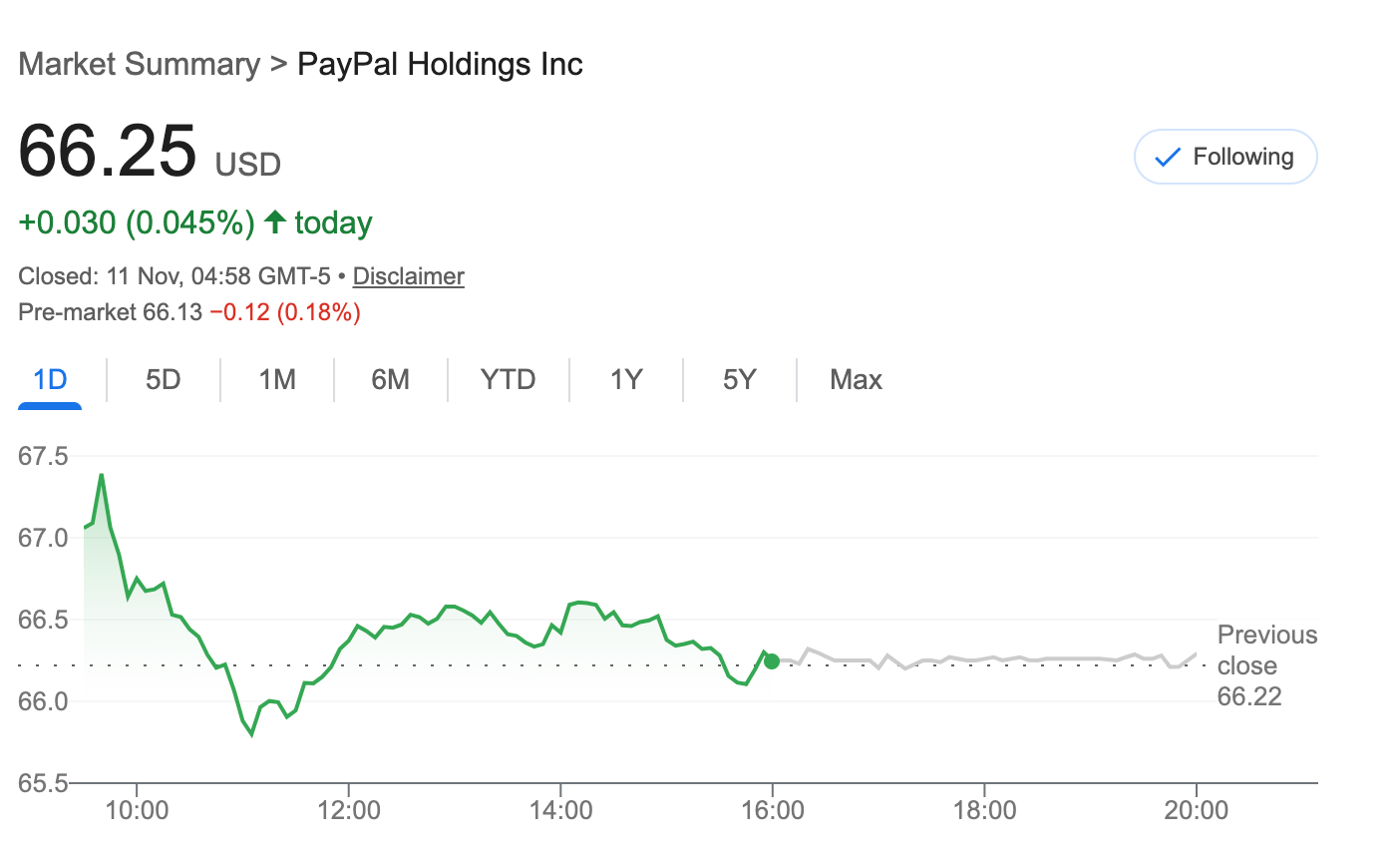From Growth to Value Play in Fintech
The company has transitioned from rapid expansion to reliable profitability and cash generation.
Few companies have gone through a valuation change like PayPal. Once worth over $350 billion at its 2021 peak, it now trades near $70 billion, an 80% drop that’s turned a former market favourite into a largely overlooked franchise.
PayPal’s shares are down about 25% so far this year. But when expectations drop this low, it often sets up an interesting opportunity. The company still has a strong brand, massive scale, and keeps generating plenty of cash — that kind of foundation doesn’t disappear overnight.
PayPal processes $1.7 trillion in annual payment volume and serves over 430 million active accounts. Competition has intensified — Apple Pay, Stripe, and Block’s Cash App, but PayPal remains one of the most recognised and trusted payment brands worldwide.
What Changed and What Hasn’t
The mix has shifted.
More volume now flows through Braintree, the lower-margin enterprise platform, while branded PayPal checkout lost some ground. Product innovation lagged competitors for a few years. Meanwhile, Apple and Stripe kept expanding aggressively.
Outside China, global online retail transactions total around $4 trillion, which puts PayPal’s reach, roughly 35–40% of global online payment volume — into perspective. It’s no longer the fastest grower, but few players match its scale and merchant relationships.
Since Alex Chriss took over, the focus has clearly shifted to execution, efficiency, and returns. Operating cash flow dropped temporarily in early 2025 (from $3.4B to $2.1B) due to working capital movements, but the company still produced $1.7B in free cash flow in the first half — and spent $3B buying back 41 million shares.
At today’s valuation, those buybacks alone retire nearly 5% of the company each year.
A Boring but Reliable Engine
Revenue growth slowed to just 3% in the first half, but PayPal’s fundamentals remain resilient.
If it earns around $6–7 billion in free cash flow this year, the stock trades at roughly 10× FCF — cheap for a business this entrenched in global commerce.
E-commerce will continue to expand over time. As long as PayPal maintains its position, keeps margins steady, and buys back stock, intrinsic value should compound quietly in the background — not spectacularly, but steadily.
What Drives the Business
PayPal’s ecosystem runs across several brands: PayPal, Braintree, Venmo, and PayPal Credit. Together they process close to $1.8 trillion in payments annually.
1. Branded Checkout
This is PayPal’s most profitable segment, the “Pay with PayPal” button that merchants integrate into their sites.
Although it now represents about 29% of total payment volume, it still contributes more than half of transaction profits thanks to its higher margins.
Consumers continue to choose PayPal because it feels safe, especially on smaller or international websites. That trust remains a real moat.
2. Braintree
Braintree handles enterprise-level processing for companies like Airbnb and Uber, competing directly with Stripe and Adyen.
After years of rapid growth, the focus has shifted from volume to profitability. Payment volume grew just 2% in Q2 2025, but management aims to lift margins through pricing discipline and operational leverage.
3. Venmo
Venmo keeps expanding its role in PayPal’s ecosystem, processing about $80B in TPV last quarter — around 18% of total company volume, up 12% year over year.
Monetization is improving gradually through merchant acceptance and instant transfer fees. Partnerships with Amazon, DoorDash, and Uber will likely accelerate adoption.
Venmo still carries lower margins, but its user engagement and younger audience strengthen PayPal’s overall reach.
The Core Economics
PayPal’s blended take rate hovers near 1.67%. On nearly $1.8 trillion in TPV, that translates into tens of billions in annual revenue and $6–7B in cash earnings.
If management stays disciplined — spending roughly $6B on buybacks annually — the company returns about 9–10% of its market cap in cash each year.
Let’s break down the implied value of each segment.
SegmentEst. Pre-Tax ProfitMultipleApprox. ValueBranded Checkout~$4B12×$45–55BBraintree~$1.5B12×~$15BVenmo~$0.5B (est.)13×~$6BTotal Core Value≈$66B
If PayPal lifts free cash flow to $7.5B and earns a modest 12–13× multiple, fair value sits between $85B–$95B — roughly 40–50% above current levels.
The Key Risks
Competition:
Apple Pay, Google Pay, Stripe, Adyen, and Block are all vying for users and merchants.
PayPal’s moat relies on trust, ubiquity, and partnerships — but it needs faster product development to defend its share.
Margins and Execution:
Alex Chriss’s turnaround depends on cutting redundancy, simplifying products, and keeping costs in check. If margins erode further, the story changes — but for now, signs point to stabilisation.
Final Thoughts
PayPal isn’t the fast-growth story it once was. It’s matured into a steady cash generator not exciting, but dependable. And in a market that often chases the next big thing, reliability can be a real advantage.
At roughly 10× free cash flow, with ongoing buybacks and a solid balance sheet, the downside feels well protected. Even small improvements in execution could lift the stock 40–50% over time.
This isn’t about returning to its glory days. It’s about a business that quietly earns over $6 billion a year, keeps buying back shares, and still plays a key role in global payments.
Sometimes, boring really is a good thing.
Disclosure: I wrote this article based on my independent analysis. This content reflects my personal opinion, not investment advice.




